On Season 12 Episode 07 "The Great Money Caper" of The Simpsons, I noticed a few years ago "gibberish" signs on the Russian spaceship. Randomly today, I decided to search and see if anyone decoded them but couldn't find any results.

I suspect that it is KOI8-R showing up as either Latin-1 or Windows-1252. The image I could grab is not very clear.
I have two interpretations of the mojibake as shown in this Python 3 code interpreter interaction:
>>> 'Ï‹ÏËÏÁ ¿Ä ÄÏÍ.†.'.encode('windows-1252').decode('koi8_r')
'о▀окоа ©д дом.├.'
>>> 'Ï<ÏËÏÁ ¿Ä ÄÏÍ.×.'.encode('latin1').decode('koi8_r')
'о<окоа ©д дом.в.'
Looking at the code charts on Wikpedia, I cannot figure out what the "<"-like and "+"-like symbols are. I thought about brute-forcing and matching it with some sort of spellcheck dictionary but I would rather get some help first.
Can the original text or meaning still be recovered? Or is it really gibberish?
(I appreciate if someone knows what it says, but I would like to see if its possible to solve this through some code.)
Edit: A naive script:
codec_list = ['ascii', 'big5', 'big5hkscs', 'cp037', 'cp424', 'cp437',
'cp500', 'cp720', 'cp737', 'cp775', 'cp850', 'cp852', 'cp855', 'cp856',
'cp857', 'cp858', 'cp860', 'cp861', 'cp862', 'cp863', 'cp864', 'cp865',
'cp866', 'cp869', 'cp874', 'cp875', 'cp932', 'cp949', 'cp950', 'cp1006',
'cp1026', 'cp1140', 'cp1250', 'cp1251', 'cp1252', 'cp1253', 'cp1254',
'cp1255', 'cp1256', 'cp1257', 'cp1258', 'euc_jp', 'euc_jis_2004',
'euc_jisx0213', 'euc_kr', 'gb2312', 'gbk', 'gb18030', 'hz', 'iso2022_jp',
'iso2022_jp_1', 'iso2022_jp_2', 'iso2022_jp_2004', 'iso2022_jp_3',
'iso2022_jp_ext', 'iso2022_kr', 'latin_1', 'iso8859_2', 'iso8859_3',
'iso8859_4', 'iso8859_5', 'iso8859_6', 'iso8859_7', 'iso8859_8',
'iso8859_9', 'iso8859_10', 'iso8859_13', 'iso8859_14', 'iso8859_15',
'iso8859_16', 'johab', 'koi8_r', 'koi8_u', 'mac_cyrillic', 'mac_greek',
'mac_iceland', 'mac_latin2', 'mac_roman', 'mac_turkish', 'ptcp154',
'shift_jis', 'shift_jis_2004', 'shift_jisx0213', 'utf_32', 'utf_32_be',
'utf_32_le', 'utf_16', 'utf_16_be', 'utf_16_le', 'utf_7', 'utf_8',
'utf_8_sig',]
source_str_list = ['Ï‹ÏËÏÁ ¿Ä ÄÏÍ.†.', 'Ï<ÏËÏÁ ¿Ä ÄÏÍ.×.']
for mangled_codec in codec_list:
for correct_codec in codec_list:
decoded_str_list = []
for s in source_str_list:
try:
decoded_str_list.append(s.encode(mangled_codec
).decode(correct_codec))
except (UnicodeEncodeError, UnicodeDecodeError):
continue
if decoded_str_list:
print(mangled_codec, correct_codec, decoded_str_list)